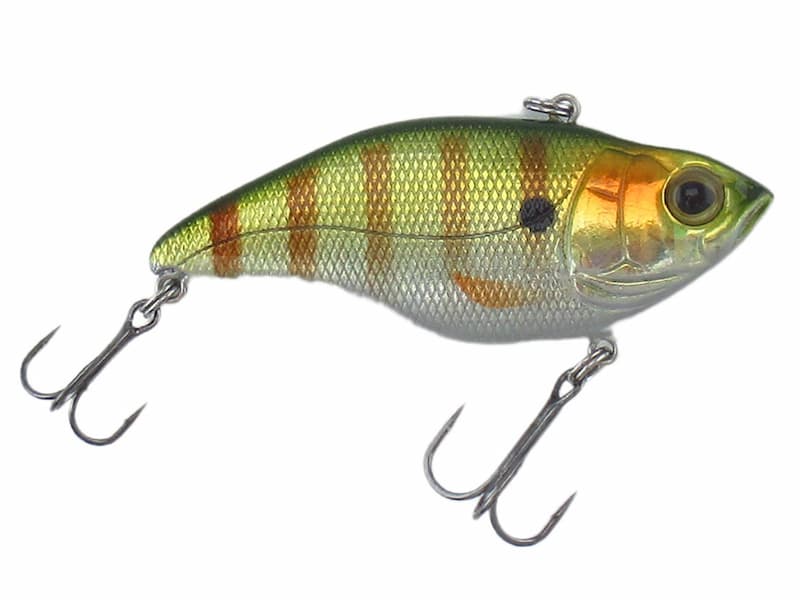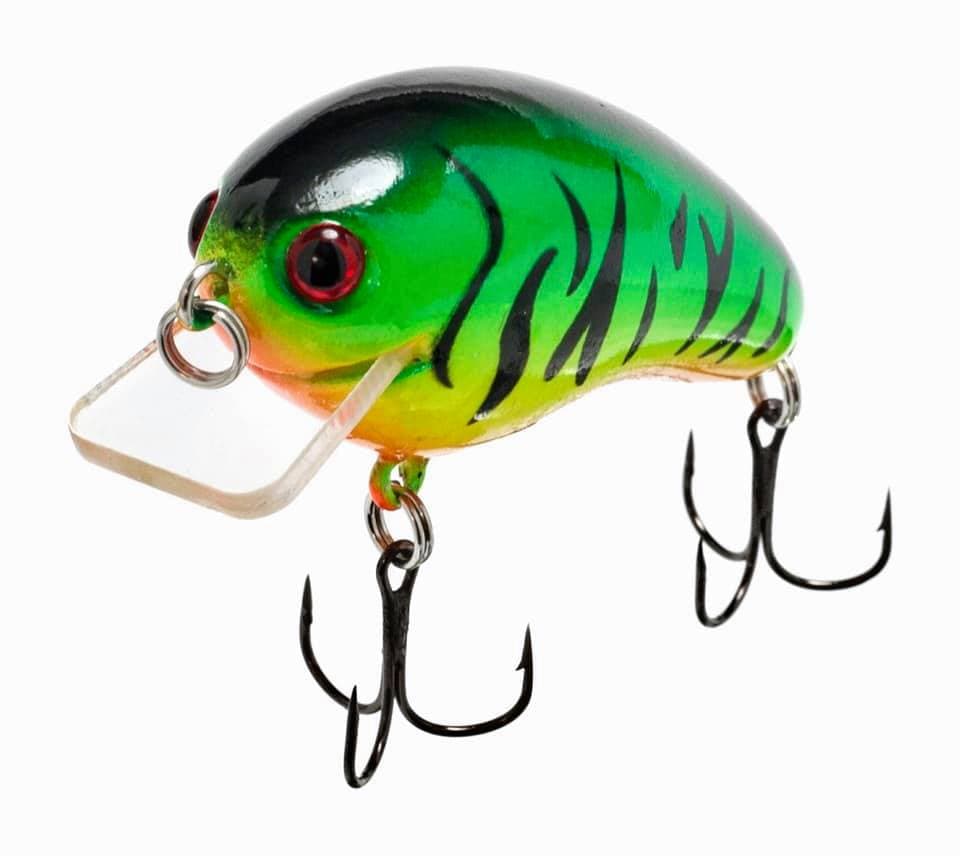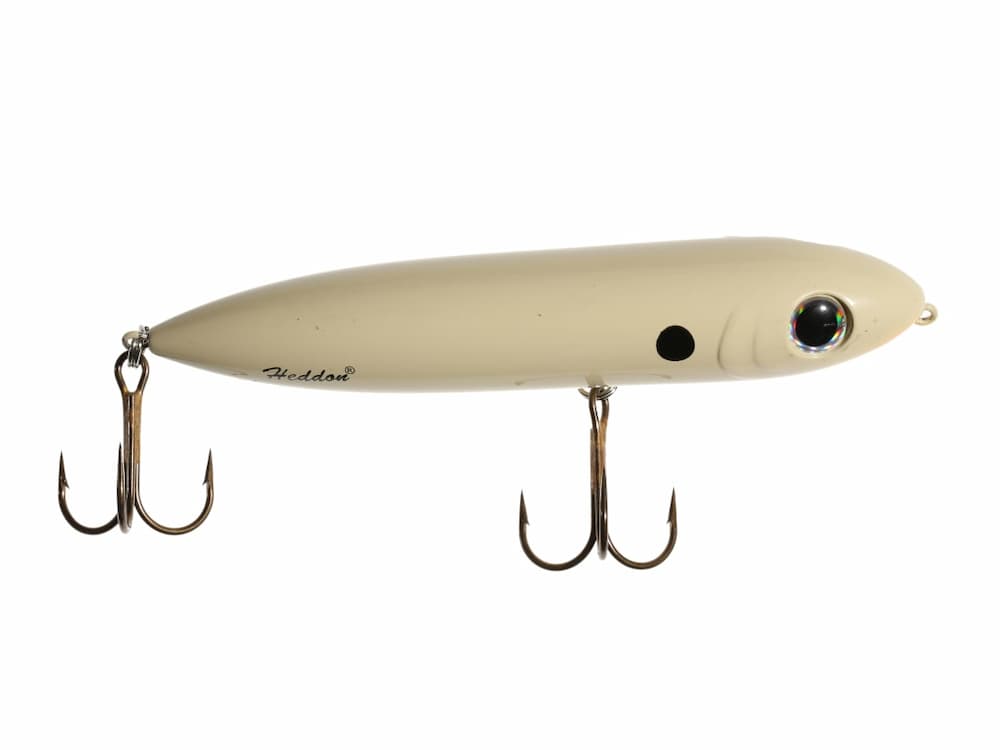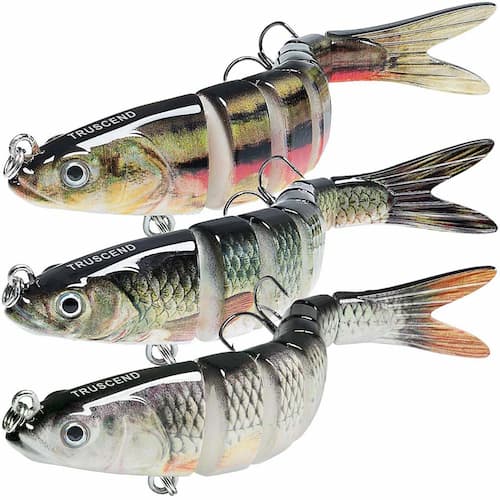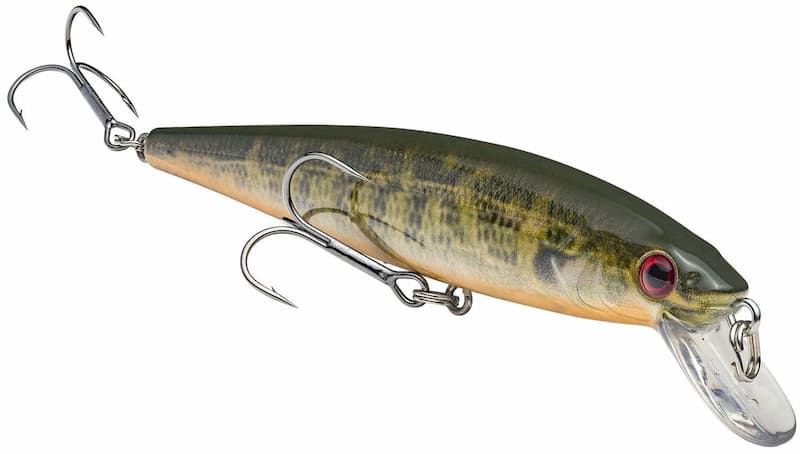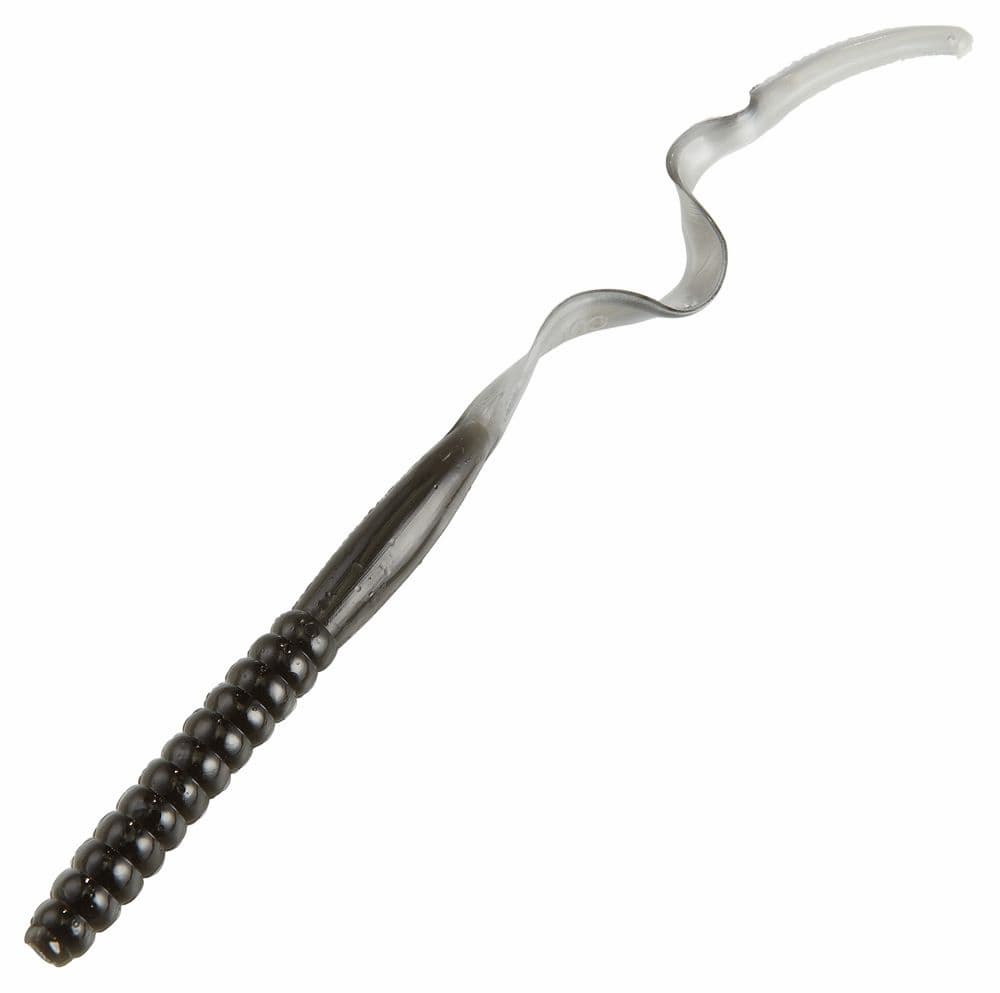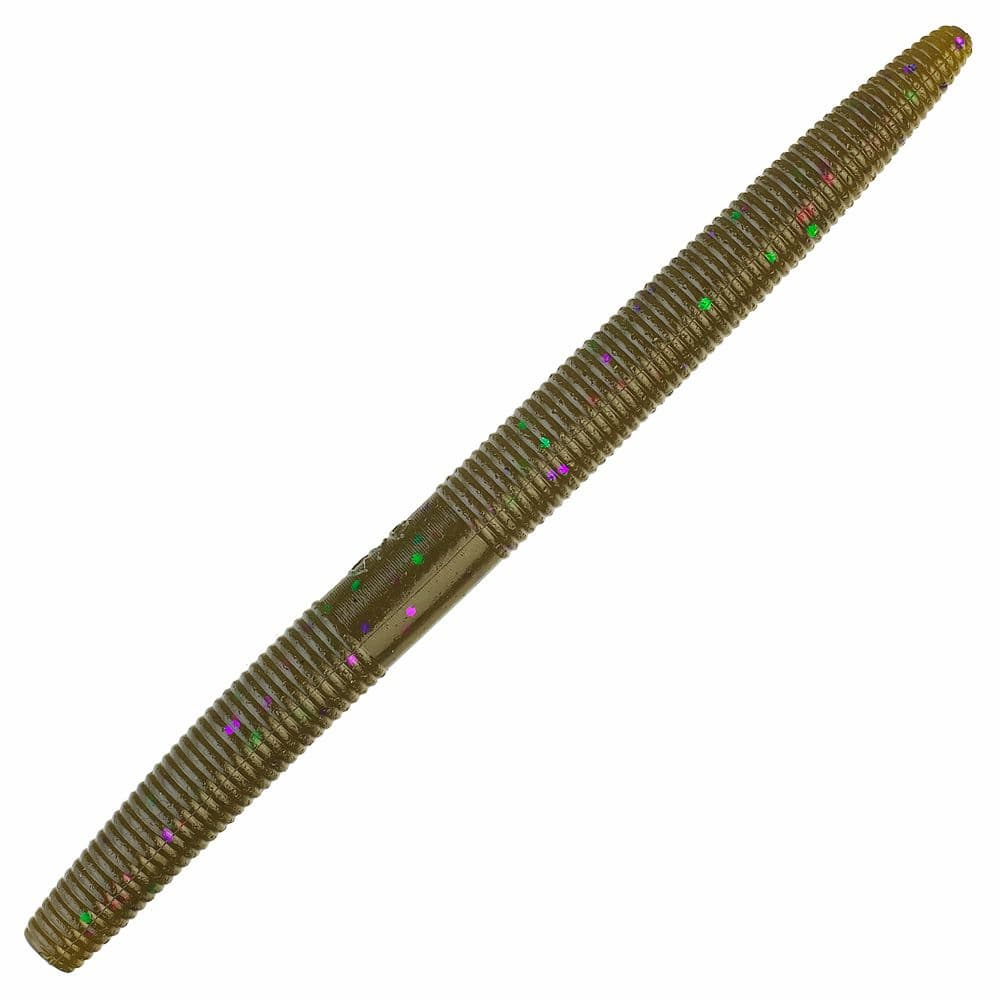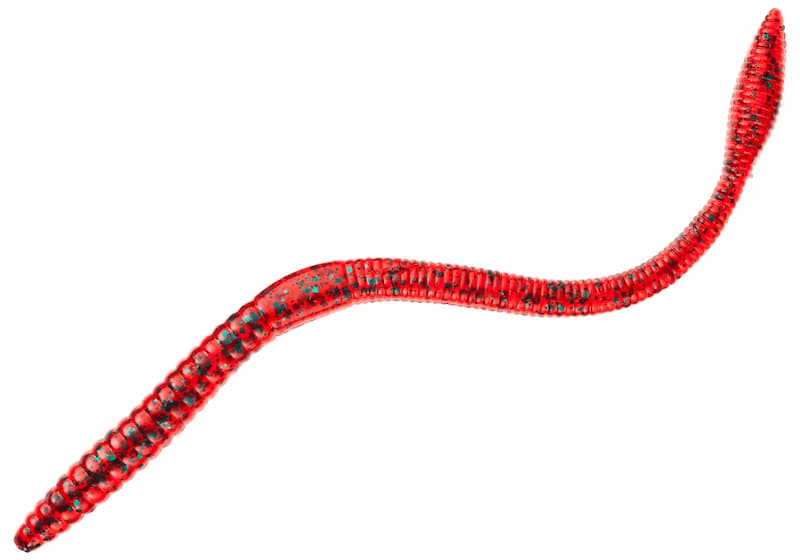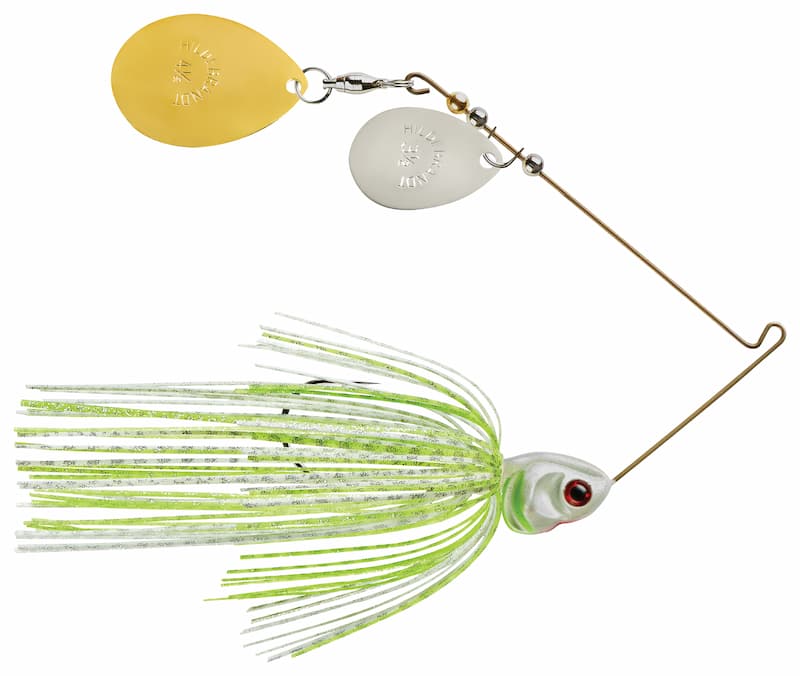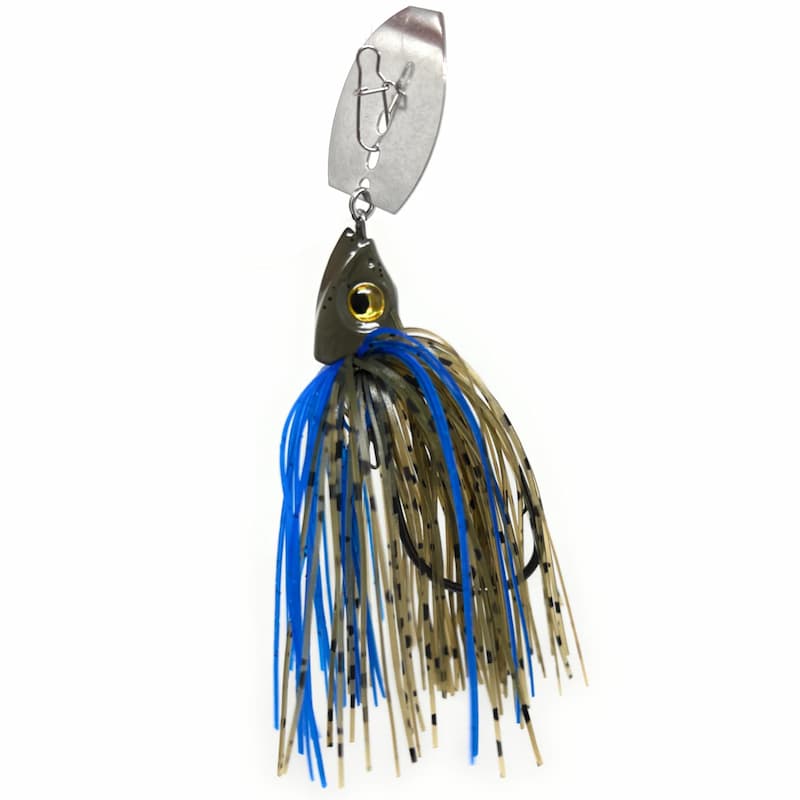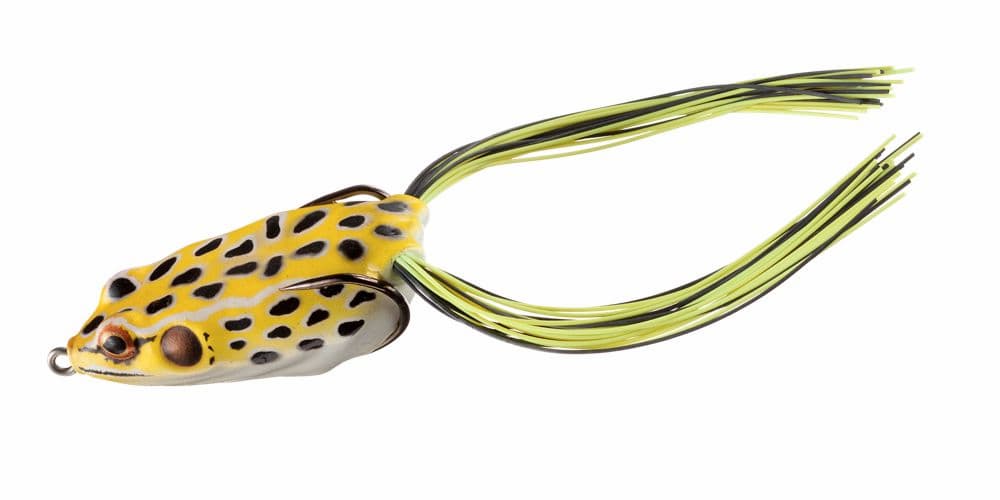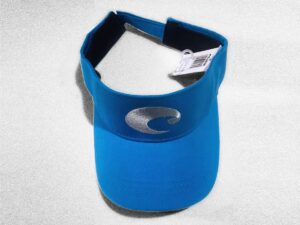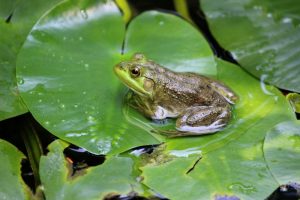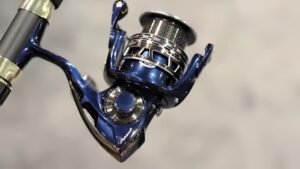Lures
9 Best Spring Bass Lures To Increase The Fishing Action
Home » The Best Bass Lures » 9 Best Spring Bass Lures
All You Need to Know About Bass Fishing During Spring
There are different types of iconic fish in the U.S., and one of them is the bass. One of the best times to target bass is during the spring.
Bass spawn during the spring time. Because of this they are generally more active and aggressive in hunting. Also, there will be numerous opportunities and challenges.
In this article, we’ll guide you through the best bass spring fishing lures as well as the essentials of bass fishing during spring.
If you’re looking for general recommendations on the best bass lures year round, click here to see our article on the top 20 bass lures.
Top 9 Spring Time Bass Lures And Techniques
Lipless Crankbaits
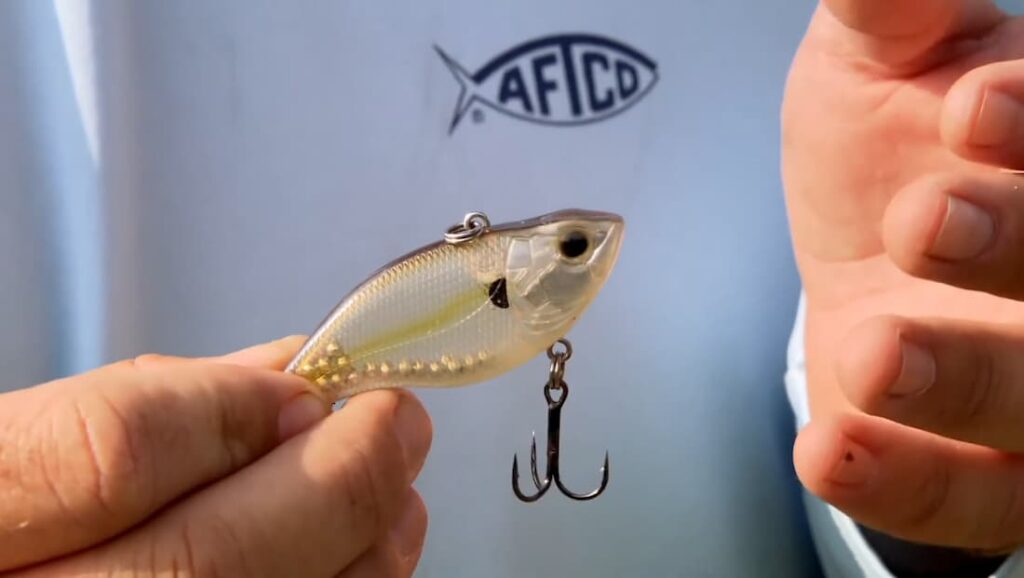
One excellent method of catching bass using lipless bait is to cast a long distance then reel as you try to lure the fish. You will need to keep the bait on top of the vegetation and reel into the vegetation as you try to lure the bass out.
After casting, you need to start reeling to ensure the bait does not flutter or fall as it drops. Accordingly, you should constantly adjust your rod positioning and speed to maintain the proper depth as you reel in the lure.
At this point, you should be feeling the grass as you reel in the lipless crankbait. If that is the case, retrieve faster as you lift the rod tip to raise the lure. If you do not feel the grass, retrieve slowly until the lure is barely in contact with the vegetation.
If this technique does not give you any bite, try dropping the bait periodically into the vegetation as you pull it back with a wrist flick. In most cases, you will notice hungry bass striking as the crank bait emerges from the grass vegetation.
Recommended Lipless Crankbait:
Spro Aruku Shad Lipless Crankbaits
Recommended Rig Setup:
- Rod: 7‘ Medium-Heavy to Heavy action
- Reel: 6.1:1 gear ratio
- Line: 12-20 lbs fluorocarbon
Squarebill Crankbaits
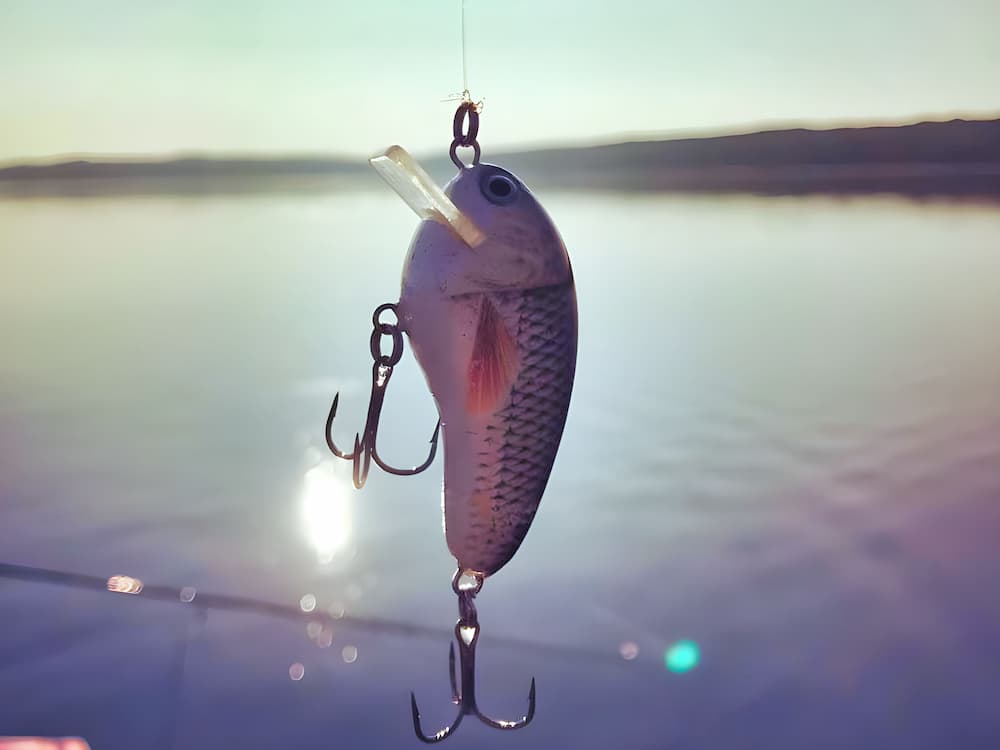
A squarebill crankbait is an exceptional bait to use around any cover, ranging from riprap and stumps to grass and bush.
One of the best times to use a squarebill crank bait is when you are targeting fish that are holding tight to cover. The only challenge with this technique is to cast within the fish’s reach.
When you are fishing over open areas, you should cast the squarebill crankbait with a moderate distance then reel the lure in to the fish, and repeat the process as you fish.
When fishing over vegetation, you should use a slow retrieve as you reel the lure in.
Square-bill crankbaits come in a range of sizes, shapes, and colors. You also have the option to choose between silent ones with knockers or the BB’s that create distance underwater to get the bass out of vegetation.
Recommended Squarebill Crankbait:
Shepard Shad 2 Square Bill Crankbait
Recommended Rig Setup:
- Rod: 6’10” to 7′ moderate action
- Reel: 7.3:1
- Line: 15-20 lbs fluorocarbon
Topwater Walkers
Walkers are also known as walk-the-dog-style topwater baits; this is the most effective bait if you want to catch aggressive bass that breaches the water surface searching for food.
Walkers are often preferred to any other bait type and considered a must-use for anyone looking to catch bass.
The top water walkers typically have a long body comprised of plastic or wood that helps the lure float on the surface of the water. Bass are attracted to the bait as it jerks and splashes water and replicates a wounded baitfish.
The walker should be worked at a speed that matches that of a bait fish. The walk the dog tactic is a great way to really grab the attention of nearby bass.
There are many varieties of topwater walkers that vary in size and incorporate different elements such as differing face shapes, internal BB’s, and more.
Recommended Topwater Walker:
Heddon Rattle Spook Fishing Lures
Recommended Rig Setup:
- Rod: 7’2″ Med Heavy
- Reel: 7.1:1+
- Line: 40 lbs braid
Swimbaits
Swimbaits are an absolute blast if you want to catch big bass.
With this, you will have to time when the water temperature is in the mid-50s, mostly in early spring. The key here is to have the right equipment to match your fishing technique.
If you’re throwing decent sized swimbaits you may want to consider having an 8-foot swimbait rod and pair it with a lower gear ratio baitcaster. The lower gear will provide the torque needed to pull in those monster bass that large swimbaits tend to attract.
As for colors, go for dark baits in low-light, dirty waters and something of a sexy minnow color during sunny days when the water is not so dirty.
Recommended Swimbait:
TRUSCEND Multi Jointed Swimbaits
Recommended Rig Setup:
- Rod: 7’11”+ heavy action
- Reel: 5.0:1 up to 6.3:1 gear ratio
- Line: 20 lbs fluorocarbon
Jerkbaits
You have to be very cautious when fishing bass using a jerk bait. Start by casting the lure over a hump or ridge top. Reel quickly for the bait to drop to depth, then jerk the rod twice or three times. Pause for the lure to remain stagnant for some time before jerking again.
Continue the pause and jerk process as you pull up the line.
Your success will significantly depend on the rhythm of pulls, pause, and the sharpness of every jerk.
If you are fishing in the early spring, ensure your pause length is more significant since the water is often colder. Also, you should make your jerks lighter and less frequently to imitate the winter-chilled baitfish.
If you do not get any bites on the jerkbait, change the jerks’ tempo or adjust your pausing periods. You can also try different patterns of jerks and pauses until you find one that gives you a bite.
Once you find the tempo that gives you a bite, stick with it to reel in big ones.
Recommended Jerkbait:
Strike King KVD Jerkbait
Recommended Rig Setup:
- Rod: 6’10” to 7′ medium-heavy
- Reel: 6.6:1
- Line: 12-20 lbs fluorocarbon
Plastic Worm Technique
The plastic worm technique will largely depend on your fishing conditions and waters. These factors will also determine the worm to use and the presentation you want to achieve.
Style, size, color, and weight will also determine what makes up the rig and worm presentation that works best for you. Style, size, color, and weight are the factors that differentiate worms.
The worm style you choose will determine the bait action and profile. Soft plastic worms come in a wide array of shapes and actions. You may find some soft plastic baits with no action while others have a ton of actions.
Here are some of the most used rubber worms:
Ribbon Tail Worm
Ribbon tail worms are the classic rubber worms with a straight body that transitions into a curly tail on the other end. These worms are usually Texas rigged at the head to allow the tail to flip-flap in the water.
Recommended Ribbon Tail Worm
Culprit Original Worm
Stick Worm
Stick worms have no action and are mostly known as “do nothing” baits. You will notice that they lack tails or any appendage that can bring about action. In most cases, they are Senko-style worms or longer trick worms.
Recommended Stick Worm
Yamamoto Senko Bait
Finesse Worm
Finesse worms are the most effective to use if the bite gets tough. These are tiny worms meant to be rigged and fished with lighter tackles. They make the vast majority of the plastic worms category.
Recommended Finesse Worm
Strike King KVD Perfect Plastic Finesse Worm
Recommended Rig Setup:
- Rod: 7’2″-7’6″ Medium-Heavy to Heavy
- Reel: 7.1:1 +
- Line: 17-20 lbs fluorocarbon
Spinnerbaits
Spinnerbaits are categorically used to create vibrations and noise to rattle bass. Bass are very sensitive to sound and rely heavily on their hearing ability. Therefore, you will need something that creates noise in calmer waters to grab the bass’ attention.
Spinnerbaits are versatile since the metal blade attached to them come in a wide variety of sizes and shapes. Some anglers also prefer trimming the fishing lure skirt to prevent them from being tangled or wound up.
On a calm day, you may want to retrieve your spinner bait slowly. However, you should reel immediately the lure gets into the water on a windy day. Accordingly, you may need to make a splash for the blade’s shiny surfaces to attract the fish. You can also pull the bass lure then drop it severely to get better results.
Recommended Spinnerbait:
Booyah-Colorado-Blade-Spinner-Bait-Stock-Image
Recommended Rig Setup:
- Rod: 6’10” to 7′ moderate action
- Reel: 6.4:1
- Line: 15-20 lbs fluorocarbon
ChatterBaits
As someone interested in bass fishing, you may ask yourself whether Chatterbaits are suitable during spring. Chatterbaits are a great way to stand out to bass in spring.
Chatterbaits allow you to cover a large part of the water efficiently and effectively.
If you’re finding other lures to be unproductive, try throwing a Chatterbait and you may be surprised at how well they work in unproductive water.
Chatterbaits are especially great when you’re fishing around vegetation such as in the spring when bass may be holding tightly to cover. Chatterbaits have a great drawing power to entice reluctant bass to come out from hiding.
A chatterbait will make more of a commotion as it moves through the water, making it more appealing to bass.
You can find chatterbaits in a variety of colors, sizes, and shapes. They also come in a variety of actions.
Recommended ChatterBait:
Reaction Tackle Tungsten Chatter Bait Bladed Swim Jigs
Recommended Rig Setup:
- Rod: 6’10” to 7′ moderate action
- Reel: 7.3:1
- Line: 15-20 lbs fluorocarbon
Topwater Frog
Topwater baits are pretty versatile, and they can help to lure both largemouth and smallmouth bass. During spring, the rules are altered to some extent considering bass are in different spawn stages.
In the spring, you can fish using a topwater lure, and you’ll likely find the experience to be awesome. Some situations where the frog lures come in handy include:
1) Sight-Fishing for The Bass Present on the Beds
Topwater frogs and other lures that can float on the water come in handy when conducting bed fishing. The frog can be positioned over the bed, and you’ll let it remain there. To avoid spooking, you should consider casting beyond the bed.
For spots that are very close to the shore, you can try casting up onto the bank and then gently sliding your frog into the water.
The frog should be moved slowly until it gets close to the target. It often doesn’t take long for the bass to begin to notice it. At times, you’ll start to have bites in less than a minute.
2) Focus on the Bass on Outside Edges
The most common way to fish with plastic frogs is using a stop-and-go retrieve that is slow. You should use it on the outer edges of the shoreline cover. You can manage to catch bedded bass there.
Such areas also have pre-spawn fish, which can also be caught in the water that is slightly deeper. You can make a long cast and twitch the frog back slowly. You will then work the small sections of the isolated cover that is close to the edge.
The slow stop-and-go retrieve also comes in handy across the rocky and grassy points, especially the ones with the spawning coves. Most of these regions serve as staging areas meant for pre-spawn bass and the fish that recently left the spawning beds.
Recommended Topwater Frog:
BOOYAH Pad Crasher
Recommended Rig Setup:
- Rod: 6’5″ – 7’3″ Heavy action up to extra heavy action
- Reel: 7.1:1 to 8.1:1 gear ratio
- Line: 50-65 lbs braid
There are some other great frog lures available. Check out our article – Top 11 Bass Frog Lures
Tips For Spring Fishing For Bass:
1) Always Fish Out the Area
Bass usually congregate in one place during spring. It means that if you manage to catch one of them, you’ll end up catching many more in the same area.
After catching the first bass, you should cast again along the same point. If you fail to catch a second, you should try out different angles. If your efforts prove to be futile, you should try out a new spot.
2) Always Cast for Repeat Results
To catch many bass during spring, you need to be attentive and learn more about what works well and what doesn’t work well.
The main reason is because the bass’ behavior changes within a limited period depending on the weather patterns and the temperature levels. After finding a technique that works well, you should repeat it, and you’ll manage to catch more bass.
3) Monitor the Water Conditions
The spring weather is prone to frequent changes that you may have a hard time catching bass. The best way to go about the issue is to monitor the weather conditions if you want to catch more bass. After spotting an area where bass have congregated, you should take note of the depth, water color, bottom conditions, and temperature.
Such details will come in handy as you track down bass during your next fishing escapade.
Some Top Spring Locations
During spring, you can engage in bass fishing in different parts of the globe. In the southern states, the bass start migrating in March, of which such regions are warm. In the northern regions where it is colder, the migration typically begins in late April. Nonetheless, the peak season varies from one region to another based on the weather conditions and temperature patterns.
For serious anglers, the bass migration variations make it possible to experience peak Bass fishing in different parts of the nation, all in one season. Some suitable places to conduct bass fishing include:
1. Lake Fork, Texas
Texas normally offers one of the best bass fishing experiences throughout the nation in the entire season. Lake Fork is also one of the most popular bass fishing destinations. During spring when the bass migrate, Lake Fork usually provides vegetation and grassy inlets where they will congregate. The lake also offers shallow and thin sections of water that come in handy.
2. California Delta
California is also well known for bass fishing. From the lakes, rivers, and coastal inlets, bass fishing in California usually satisfies any angler.
The California Delta is where the San Joaquin and Sacramento rivers meet, and it is a suitable spot for bass fishing. The vegetation and thick grass in the region ensure there is good cover for heavyweight bass during spring, and you can easily get a bite.
Nonetheless, the delta is expansive such that there are rising & falling tides which means you will encounter some challenges as you try to locate the bass.
3. Guntersville Lake, Alabama
The water levels in the region are stable, and there are many public boat ramps that people can use when they visit the region. During spring, Guntersville Lake is among the major destinations for bass fishing regardless of your skill level. The lake has many eelgrass patches which offer a suitable hiding place for hungry bass.
4. Choke Canyon Reservoir, Texas
This is a popular bass fishing destination present in south-central Texas. The fertile reservoir usually produces large bass, and you can hook them from the shorelines. There is suitable cover for migrating bass, including rocks, vegetation, and timber.
The reservoir typically offers different water conditions from the upper end that is muddy to the lower part of the lake, which is clear.
5. Southern Lakes in California
Numerous lakes in Southern California have produced large bass over the years, and one of them is Dottie, a bass that weighed 25 pounds and was caught in the Dixon Lake in 2006.
Lake Casitas and Castaic Lake are present in Los Angeles, and they harbor one of the largest largemouths ever to be caught.
Most of the lakes in the southern part of California ensure you’ll have the best bass fishing experience. The best time to engage in bass fishing in these regions is during early spring. You can travel to one of the lakes and focus on catching the largest bass around.
6. Lake Okeechobee, FL
There are many great bass fishing locations throughout Florida, but one of the best is Lake Okeechobee. The biggest lake in Florida, Lake Okeechobee covers over 730 square miles. Due to its immense size bass fishing at Lake Okeechobee can be a little overwhelming. The best bet is to hire a local fishing guide, however, if you’re going solo here are some hot spots to check out: The North or South Bay, Clewiston, Harney Pond, or the Monkey Box.
Stages Of Bass Spawning In The Spring
Spawning normally takes place during spring. If bass are looking for mates or just held up in their nests and moving to the lake, you should focus on comprehending the activities the fish are engaging in if you’re going to accomplish your end goal. We’ll now look into the stages of bass spawning during spring.
Early Spring Bass Fishing
Early spring, pre spawn bass fishing may be a better time to catch fish with less effort. Typically, bass are present on the shallow end and you can see them easily. The fish, which happen to be hungry, are often ready to pounce on any object that crosses their path.
If the anglers fail to recall the three tips, then a spring day can be less fruitful than the anticipated action plan. The cold front will keep the fish close to the shallow end. That way, it becomes challenging to risk venturing into the cold shallows.
Immediately the weather improves, the bass hides in the shallows. After that, it will stick to various areas that are easily accessible to water. Even so, you still need to evade drops in the water. For that reason, you should transition to a variety of areas such as coves.
Mid- Spring Fishing
Mid-spring fishing is highly dependent on where you reside. Warmer climates may have already started their spawn season, while the cooler climates of the north may just be kicking into gear now. During this time the spawning bass are typically more aggressive and are fighting for an opportunity to mate.
During spawning, male bass will typically hang out deeper in the water while females move to the spawning zone and the water edges, which can make them easier to catch. Nonetheless, you’ll encounter some challenges. For instance, the bass could be guarding their nests. As a result, they will focus on getting rid of any possible threats around.
Late Spring Bass Fishing
The spawning season usually ends, and the fish dives back into the hunting process; this would be an ideal time to venture into targeting females since they’re mainly focused on feeding the spawns. Perhaps what makes it better is the fact that the smaller fish, such as Bluegill, that move to spawn are completely gone.
The bass will then focus on launching an ambush, which means they will lurk around the cover. They will then wait to launch an attack on the unsuspecting fish. You can use this to your advantage. During this phase, you will not encounter issues such as dealing with strong fish. After Summer, the water temperatures normally stabilize and the bass will eventually leave the shoreline.
Conclusion
We all have different hobbies, and for some, bass fishing is one of their major hobbies. In this article, we have shed some light on everything you need to know about Bass fishing. The main reason why we have focused on bass fishing in spring is because the fish usually migrate during the spring season. As a result, it is a great time to engage in such activities.
We have listed some suitable regions for bass fishing during spring. The California Delta is preferable if you want to catch large bass.
We’ve also listed the stages of bass spawning and the best bass fishing lure and techniques. Each of these bass lures and techniques has been dissected in an in-depth manner.
As an Amazon Associate I earn from qualifying purchases.
Table of Contents
Table of Contents
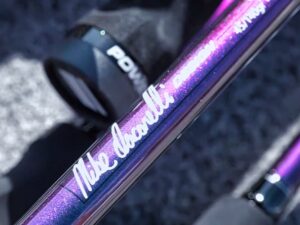
Abu Garcia Ike Signature Power Rod Review
The Abu Garcia Ike Signature Power Casting Rod is a great choice for anglers looking for a sensitive and powerful casting rod. The high modulus graphite blank is extremely sensitive and the 36-ton construction ensures the rod is durable. The purple color is eye-catching and the split rear grip with the Fuji ACS reel seat provides great comfort and control while casting. The Ike Signature Power Casting Rod is a great choice if you’re looking for a sensitive, powerful, and versatile casting rod.

9 Best Bass Baitcasting Rods
The fishing rod is one of the most critical factors for fishing success. Despite that, too many people fail to do their research and end up with a subpar rod or one not fit for the type of fishing techniques they are wanting to use. Don’t make that mistake. Take a few moments to find the perfect bass casting rod.
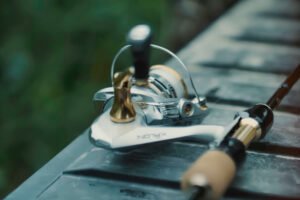
13 Fishing Kalon C Spinning Reel Review
Looking for an affordable and reliable reel? Look no further than the 13 Fishing Kalon C Spinning Reel! With Ultimate Cut aluminum drive gear, GLIDE oscillation system, and a maximum drag of 14 pounds, this reel offers powerful performance and smooth drag when battling big fish.

